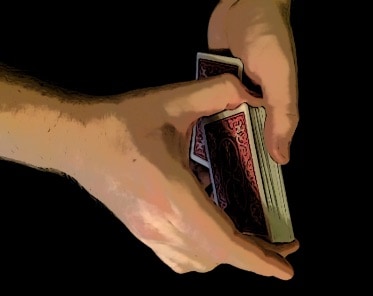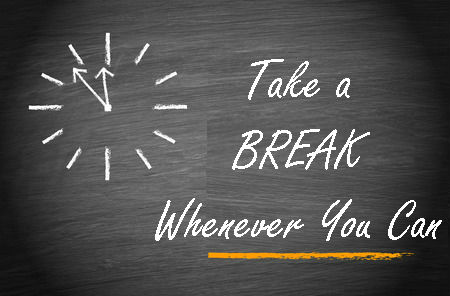This is the story of how a quick update turned into a creative bottleneck, how a stretch goal became a years-long challenge—and why the 20th Anniversary Edition of The Paper Engine had to take the long road to become what it is now.
Welcome. If you’ve ever read The Paper Engine, thank you. If this is your first encounter with it—thank you just as much. In either case, I’m glad you’re here.
What follows is a personal story: how this edition came to be, what made it so hard to finish, and what I learned through the process. But I also know many of you may be here to answer a more immediate question:
“What’s actually new in this edition—and is it worth it?”
If that’s your focus, feel free to scroll ahead to the section titled: What’s Actually New in This Edition
There, you’ll find not just a list of what’s included, but the reasons why I chose to add it—and most importantly, what it can do for your magic.
But for those who want the full picture—from the creative breakdown to the comeback, from the silence to the support that made it possible—this post tells the whole story.
New Chapters. New Clarity. Same Engine.
The 20th Anniversary Edition of The Paper Engine is finally here—complete with a brand-new Gravity Half Pass chapter and deep dive into Natural Dealing Position.
Get your copy.
How It Started
In September 2020, right in the middle of the CC Club Deck Kickstarter campaign, I made a bold decision. The campaign was a success—and in a moment of inspiration, I announced a stretch goal that felt like the perfect tribute:
A 20th Anniversary Edition of The Paper Engine.
I would include a brand-new section on the Gravity Half Pass—the sleight at the heart of the original book—and illustrate it with the Club Deck back design. We’d offer both a paperback and a signed, numbered hardcover collector’s edition. It would be smart. Elegant. Exciting. And most of all, I thought it would be easy.
It wasn’t.
When Everything Stopped
The project launched just as COVID lockdowns were beginning to lift—but the wreckage was just beginning to show. Like so many others, I was in a state of emotional exhaustion. I felt isolated, overwhelmed, and creatively paralyzed. I’d promised hundreds of people I’d write something new for The Paper Engine—a book I wrote when I was 20, with the guidance of brilliant minds like Stephen Minch and Damon Webster.
But this time, I felt like I was on my own.
And the truth is… I couldn’t do it. I tried. I wrote. I hated what I wrote. I froze. I spiraled.
And then, I went silent.
The Ghosting That Wasn’t Meant to Be
For a long time, I didn’t know what to say. Every update felt like a spotlight on failure. And the longer I waited, the heavier it became. Backers reached out. Some angrily. Some kindly. Sometimes I answered—but I didn’t have anything good to say.
A group of frustrated Instagram users led by Jonothan Bryce began calling out the silence. Some of it stung. But when I looked closer, I realized something important:
They weren’t trying to hurt me. They were trying to reach me.
Eventually, I connected with Jonothan directly. His empathy—and his persistence—sparked something. He helped me find a way to move again. I began posting again. Apologizing. Updating. Slowly, the project came back to life.
Around the same time, I was diagnosed with prostate cancer. It was one more wave in a storm that had already gone on far too long. But strangely, the diagnosis didn’t stop me—it clarified things. It reminded me how much I wanted this book to exist. To be good. To be real.
The Turning Point
As the pieces started falling into place, my old friend Andi Gladwin and the team at Vanishing Inc. stepped in to help bring the project home. I knew Andi was producing the best magic books in the world—and with his help,The Paper Engine 20th Anniversary Edition finally became the version I had always imagined.
With Vanishing Inc. on board, we were able to make practical production decisions that elevated the entire project—without overcomplicating it. Everyone who backed the project will receive a hardcover edition, and collector’s versions will come with a slipcover. The book is more beautiful than I could have hoped or planned.
And now, if you’re reading this, the 20th Anniversary Edition of The Paper Engine is finally finished—and available. It’s here.
What’s Actually New in This Edition
While the core content remains intact, this edition includes two new additions that I believe will be especially meaningful to readers—starting with a completely reworked, in-depth treatment of the Gravity Half Pass.
When we wrote the first edition, I was 20 years old. I developed the Gravity Half Pass and described it as best I could—with help from John Lovick and Stephen Minch. But even then, I knew we hadn’t captured everything that made the technique unique. The most important moment—the “tumble” that reverses the deck—was just too hard to pin down clearly, at least in writing. We did our best, and trusted that committed readers would practice long enough to fill in the blanks.
Twenty years later, I’ve had the chance to teach this move to magicians all over the world—in lectures, private lessons, and our CC Club community. Over time, I found better ways to explain it. I discovered metaphors and analogies that worked. I saw what students struggled with, and what unlocked the technique for them. And those hard-won teaching insights are at the heart of this new edition.
The other addition—the section on Natural Dealing Position—may surprise or even confuse some readers. It’s not a move. It’s not flashy. And for those who picked up the book looking for “knuckle-busters,” it might feel like an odd choice.
But along the way, I realized something essential: Certain magicians—myself included—decide early on to start ‘chasing’ the hardest moves they can find. Something about the challenge—the chance to master something—proves very appealing to the kind of magician drawn to sleight-of-hand magic. But by making that choice, it’s all too easy to miss acquiring (or even noticing) fundamental insights we need to render those advanced techniques practical.
The Natural Dealing Position is one of those fundamentals. It affects every sleight you do. It sets the stage for deception—or makes it impossible. And I believe it’s one of the most rewarding concepts a card magician can explore. That’s why I decided to include it, and to teach it in detail. Whether or not you’ve read The Paper Engine before, I believe this section will increase the overall take-away value you find within its pages.
I’m also proud to say that both of these new sections turned out as well as I first dreamed they could. I believe dedicated card magicians will find fresh insights and practical discoveries throughout this edition—insights that help unlock the many tricks, sleights, and ideas that form the core of The Paper Engine. The new content doesn’t just add value—it makes the entire book more accessible, more learnable, and more powerful in real-world performance.
And that definitely wouldn’t be true without the editorial help I received all along the way from Rolando Santos. He was my editor, guide, brother and friend. Thank you buddy!
Who This Edition Is Really For
If you already own the original edition of The Paper Engine, you may be wondering: should I buy this one too?
That depends.
If you are an expert card worker and you just want routines (and you’ve worked through them already) you probably don’t need the new edition.
But if you’re someone who wants to go deeper—into technique, into timing, into why sleights work and how to make them look effortless—this edition will speak to you in a new way.
The new Gravity Half Pass section is clearer, more detailed, and built on everything I’ve learned from teaching the move for over two decades. These additions bring the heart of the original material into sharper focus—making it easier to understand, more intuitive to practice, and more rewarding to perform.
If you’re the kind of magician who wants to refine not just what you do, but how and why you do it—this edition was made for you.
What I Learned
I’ve made a lot of magic in my life. But this project taught me something no trick ever could:
Sometimes, the only way forward is to stop pretending. To admit when you’re lost. To get quiet enough to hear the people who are still rooting for you. And then, to get back to work.
The delay wasn’t about logistics. It wasn’t about paper shortages or layout hiccups. It was about shame. And fear. And the terrifying possibility that I wouldn’t be able to live up to my own expectations.
But in the end, the work got done. And I believe it’s stronger—more useful, more honest—because of the journey it took to get here.
What Happens Now
The Paper Engine is going out into the world again. Retailers everywhere will be carrying it. People who’ve never read the book before will be encountering it for the first time.
But the truth is, the book is just the beginning.
If you’ve read this far, I want to invite you to see what The Paper Engine has become—because it’s not just a book anymore. It’s a door.
It leads to a club. A community. A whole new way of learning magic—at your own pace, with people who care about your progress.
If The Paper Engine brought you here, then I hope you’ll take the next step.
Because this time, I’m not going anywhere.
—Aaron Fisher
Want to Put The Paper Engine into Practice—With Me?
Inside CC Club MAX, you’ll find The Practice Engine—a guided training program where I work with members directly on the real moves, ideas, and routines that shaped this book.
It’s hands-on, personal, and built for breakthroughs. All for just $5/month.














